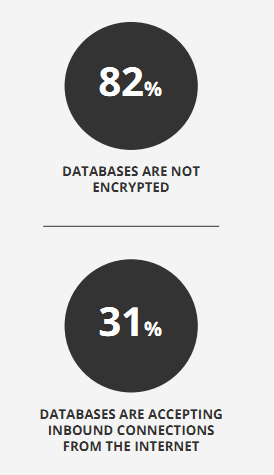ビッグデータは嘘をつかないが、それを入力する人は
私たち全員が知っている古いビジネス格言に次のようなものがあります。 顧客は常に正しい。
このデジタル経済では、公理は次のように変更する必要があることが判明しました。 顧客のデータは常に正確です。

ちょっとした物語で説明しましょう。
最近、新しい車を購入し、古い車を下取りに出すことにしました。 私は古い車を約6年間所有しており、年間約3,000マイル運転していました。 おかしいように聞こえるかもしれませんが、それは本当です。 一度、家族に会うためにオハイオ州まで運転して出かけたことがあります。 それでおしまい。 それ以外は、自宅から半径 30 マイル以内に留まりました。 私は、日曜日にだけ車で教会に行くおばあちゃんみたいなものだと冗談を言うのが好きです。
ですから、ディーラーがアクセスした車両履歴レポート内の 1 行のデータに基づいて、私の走行距離計の数値が不正確 (30,000 キロ以上もずれている) であるとディーラーから知らされたときの私の驚きを想像してみてください。 さらに、私の車は2年前にノースダコタで整備されていたと主張するデータもありました。
この矛盾は軽視すべきではない。 走行距離計の数値は下取り価格を示すものであり、それを改ざんすることは違法です(罰金や懲役の可能性があります)。 実際の走行距離計の数字が報告書の数字よりずっと低かったことを考えると、ディーラーが少し不安になったのは想像に難くありません。 彼は、私がノースダコタに車で行ったことはないと主張する私を信じるか、それとも私がノースダコタに車で行ったと主張するデータを信じるかという望ましくない決断に直面したのだろうか?
質問はすぐに「顧客は常に正しいのか」、それとも「顧客のデータは常に正しいのか」に集約されました。
車両履歴レポートの不正確なデータによって誰かが被害に遭うのは、これが初めてではないことが判明しました。 データのほとんどは依然として手動で入力されているため、間違いが発生します。 しかし、それらのエラーを修正するプロセスでは、それを入力した人が間違いを認める必要があります。 つまり、彼らは5年、10年、あるいは15年前に間違いを犯したことを覚えていなければならないのです。 データを入力した技術者が間違いを認めるかどうか。
結局、私は新しい車を持って帰り、ディーラーに報告書の訂正を任せました。 皆さんの中にも同じような経験を持つ人は多いと思います。 デジタル経済で事業を展開している場合、これはよくあることです。
ヒューマンエラー要因
問題の解決、データのマイニング、意思決定において機械への依存度が高まり続けるにつれて、私たちが持つデータが正確ではない可能性があることに注意する必要があります。 そのデータの保管チェーンのどこかの時点で、人間が関与していました。 そして、人間であることの公理的な真実は、私たちが間違いを犯すということです。 6年前、ノースダコタ州のサービス技術者がたった一度キーを間違えただけで、突然、熱いライトの下に放り出され、これまでの車の旅のすべてについて尋問されることになった。
意思決定に使用するデータにどれだけ信頼を置くかについては注意が必要です。 心配する必要があるのは偶発的なエラーだけではなく、意図的なエラーも同様です。 あなたのデータは汚れていると保証します。
DNS の設計は、権威のあるソースと権威のないソースの指定において非常に優れています。 なぜなら、矛盾があれば、唯一の真の情報源に行き、真実を見つけることができることを知っているからです。 顧客データの場合、そのようなことは起こりません。 これは潜在的な危険信号です。なぜなら、現在使用しているシステム、そして近い将来使用するシステムは、必ずしも何が正確で何がそうでないかを判断できないからです。 結局のところ、その真実性を検証できる場所はありません。 証明機関はなく、DNS のような指定された権威ソースもありません。 そして多くの場合、データに異議を唱える方法はありません。
断片的なデータから顧客のデジタルイメージを構築し続ける中で、そのデータが、ビジネス上の意思決定者である私たちにも、そのデータに基づいて下された結論の結果を受け入れなければならない人間である顧客にも、どれほど大きな影響を与える可能性があるかを認識する必要があります。
アプリケーション セキュリティ ソリューションのプロバイダーとして、当社はデータと個人情報の流出や盗難からの保護の重要性を頻繁に訴えています。 しかし、私たちは、状況を逆転させて、偶発的または悪意によるデータ破損の非常に現実的な可能性について話すことはあまりありません。
Twitter でトレンドトピックになる前に、そうすべきです。

さまざまな形で人々に対する報復的なデジタル攻撃が増加しています。 911のディスパッチャーは携帯電話から正確な位置や住所を取得できないため、被害者は致命的なスワッティング事件に見舞われています。 リベンジポルノは現実にあり、ソーシャルメディア上で友人や家族になりすますことは頻繁に起こっています。 そして、Kustodian の CEO である Chris Rock 氏がDEF CON (CS Monitor) で、ほとんどの国の死亡登録プロセスの脆弱性を利用して、詐欺師が金銭目的やいたずら目的で人を人為的に「殺害」する方法を実演してから 3 年以上経ちました。 注意深い人ならご存知でしょうが、これは 1995 年の映画「ハッカーズ」で使われたハッキングの 1 つで、他人のクレジットカードをキャンセルしたり、虚偽の個人広告を投稿して、何らかの軽率な行為 (認識上または実際) に対する報復として使われたものです。
このような復讐的な行為が広がり、他の場所のデータを汚すようになるのは時間の問題です。
私が頭にアルミホイルの帽子をかぶって苦しんでいると思うなら、 2017 年の RedLock CSI レポートを思い出してください。このレポートでは、データベースの 31% にインターネットへのポートが開かれていると報告されています。 誰に対しても。 27,000 以上のデータベースが一般公開されていたMongoDB の大失態を思い出してください。 適切なデータベースを不適切な人が開いたままにしておくと、データに大きな損害を与える可能性があります。
これは問題です。なぜなら、データがしばしば侵害されない絶対確実な真実として扱われるという変曲点に達しているからです。 データ入力エラーのせいで、その「真実」のせいで私は刑務所行きになっていたかもしれない。
デジタルデータデューデリジェンス
私たちのビジネスや生活のどれだけがデジタル領域に保存されるかが増え続ける中、私たちは深呼吸して、データ ウェアハウス内のビットやバイトが実際の人間の何らかの側面を表していることを思い出す必要があります。 私たちがそのデータを扱う際の注意深さは、私たちの顧客である生身の人間に対する私たちの姿勢を反映しています。 特に、今日入力するデータのどの断片が、後で顧客に損害を与えるような形で解釈される可能性があるか分からない場合はそうです。 結局のところ、私の車両履歴記録への記入は、ノースダコタ州でのオイル交換を登録するためだけのものでした。 悪意はなかったのですが、結果は私にとって悲惨なものになったかもしれません。
データの破損を防ぐことを念頭に置いたセキュリティ ポリシーの作成、アプリやデータベースへのアクセスの制御、データの手動入力への注意の強化など、どのような場合でも、データは嘘をつかないものの、データは入力した人が入力した内容を正確に表すものであり、入力した人が持っている可能性があるということを覚えておく必要があります。
